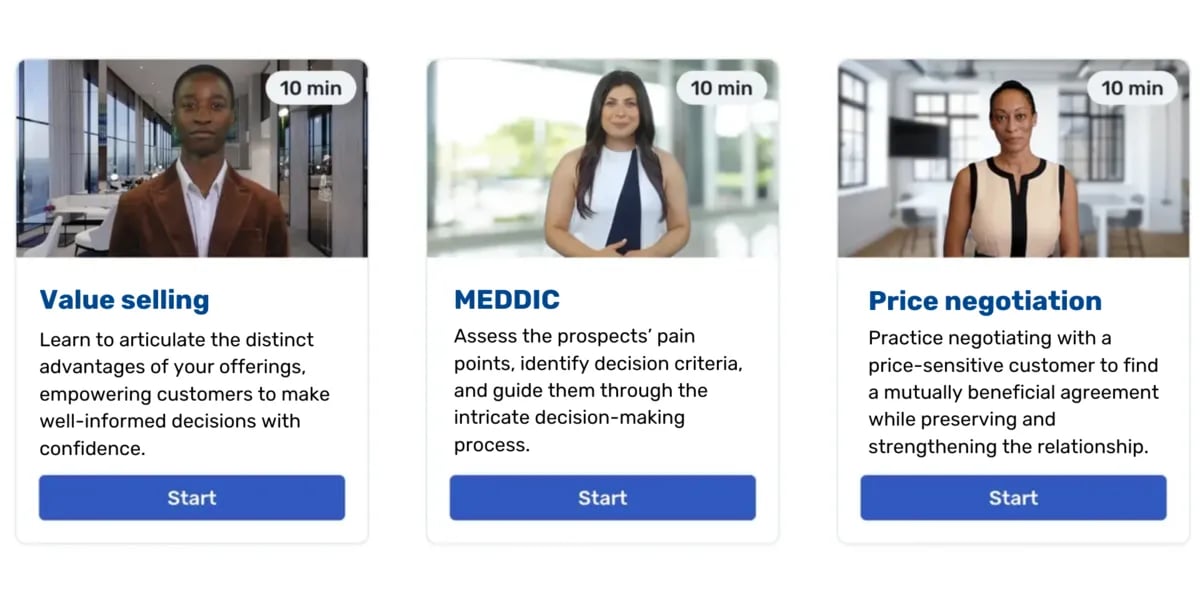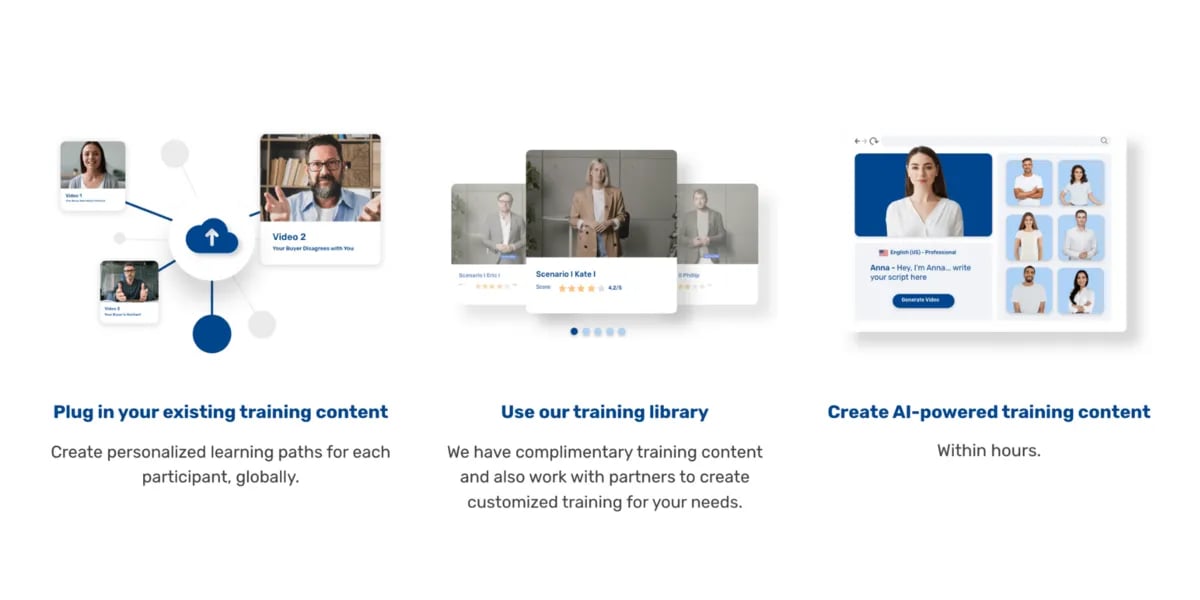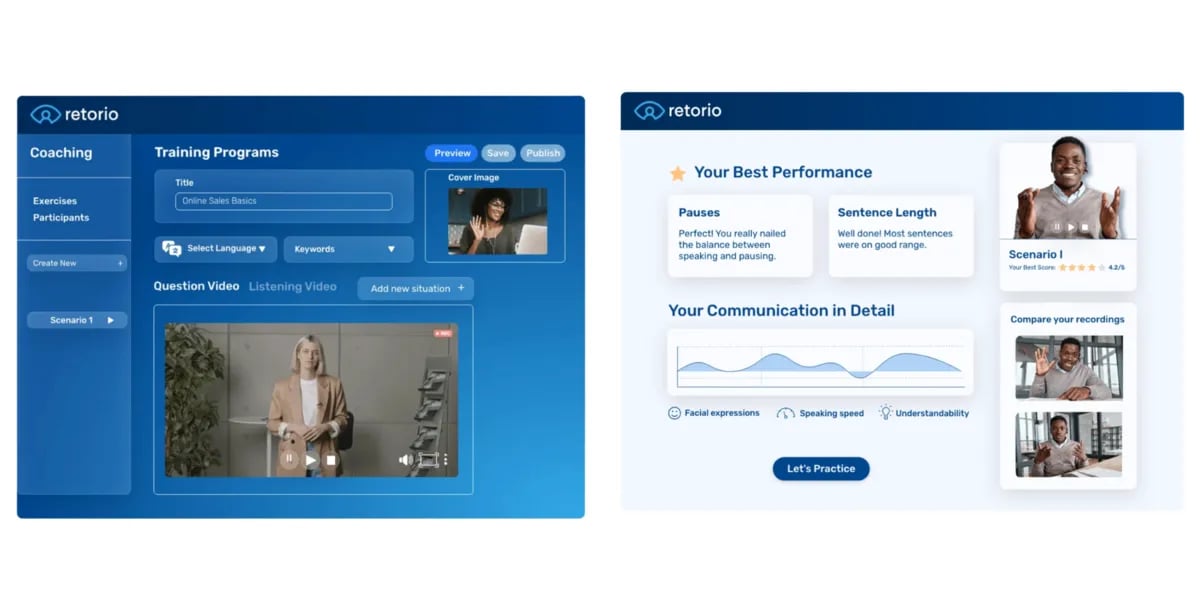According to a 2023 report that reveals insights from a survey of over 450 RevOps, Finance, and Sales Leaders from the United Kingdom and the United States:
That's right. The gap between expectations and reality is clear-cut.
In the modern business environment, such statistics underpin the harsh reality that revenue targets loom large, and meeting sales quotas seems to be an uphill challenge.
This prompts the absolutely critical question: What can companies and sales managers do to empower their sales teams to reach their targets? What's the key to unlocking their success?
The answer lies in a methodology pioneered in the 1990s by Jack Napoli, who, with his co-founder, tripled sales from $300 million to $1 billion in just four years at their technology company, PTC.
What's in this post?
- What is the MEDDIC sales methodology?
- Why is the MEDDIC sales methodology so important?
- What is the MEDDPICC sales process?
- How can reps master the MEDDIC methodology?
What is the MEDDIC sales methodology?
Qualifying and closing deals in the world of B2B isn't easy, even for the most seasoned of sales teams. That's where the MEDDIC sales process comes into play—a methodology designed for sales reps to better understand their target audience in order to sell to them the right way.
The MEDDIC sales process works best in B2B environments that have longer sales cycles and higher average order values or account sizes. Given limited resources, frameworks such as MEDDIC can help sales teams optimize their effort and time so they can maximize their revenue potential.
Each letter stands for a different element, starting with metric, economic buyer, decision criteria, decision process, identify pain, and champion.
Let's break these down:
| MEDDIC component | Description |
| Metric | This is the stage where the salesperson aims to find out what the prospect hopes to gain from your solution; those gains should be quantifiable and help the sales representative understand the objectives of the customer. |
| Economic buyer | In this stage, sales reps need to find out who in their target organization has the economic buying power, as this individual in the company most likely has the budget and the final decision in the buying process. |
| Decision criteria |
During the decision criteria process, sales reps should determine the criteria that the organization will use to evaluate the offer. This helps sales professionals personalize their sales pitch and sales strategy to meet their needs accurately.
|
| Decision process |
These are the steps that form a process that a buyer follows in order to make a decision. As opposed to the decision criteria, which focus on what exactly the decision will be based on, the decision criteria focus on how the decision will be made. These two steps are pivotal for a seller to stay on top of where they stand on their deal. |
| Identify pain | This stage is about identifying the pains or challenges that the organization is going through and, through problem-solving, finding the way that the product or service can help. |
| Champion |
This final step is about identifying the person from the organization who is invested and pushes for your offer. This person simply needs to be well respected in the organization and doesn't necessarily need to be in a high position. This person will ultimately help navigate the decision-making process. |
Why is the MEDDIC sales methodology so important?
This increase in numbers also highlights the increased need for a structured, reliable, and, last but not least, timeless methodology for sales teams to depend on and guide them through turbulent economic times.
Despite the fact that the MEDDIC sales process gained popularity over twenty years ago, it has remained relevant, innovative, and functional, even through the wave of technological advancements we've witnessed during the last two decades.
Here are a few reasons why:
-
It creates structure and clarity
In a world like sales, where every interaction is different and every prospect has their own unique pains and worries, having a structured approach during the sales process ensures that reps ask the right questions and do not miss any crucial steps as they better understand their prospects needs, decision process, and the value of the product or offer.
-
It focuses on sales funnel efficiency.
The MEDDIC methodology essentially helps sales professionals identify which prospects are worth focusing on, and who are most likely to convert into customers, and thus reduce the time and costs spent on trying to nurture leads that aren't a fit.
-
It encourages a more customer-centric approach
By adopting a structured approach to better tailoring offers and personalizing pitches to prospects, the MEDDIC sales process ensures that reps prioritize client satisfaction and foster long-term relationships as part of the sales strategy.
-
It creates a common language
The MEDDIC process simplifies sales language, creating a common language and baseline throughout a sales team and allowing everyone to
What is the MEDDPICC sales process?
The elements of MEDDPICC are very similar to those of the MEDDIC methodology, however, with some additional components, namely "paper process", "competition" and "compelling event". Though both methodologies share the same core goal, for sales reps to better identify pain, needs, potential customers decision criteria, etc.,
-
Paper process
The paper process refers to a series of steps that follow the decision process and help take potential customers from decision to signature in the sales process. This process ultimately starts as soon as the sales rep knows that they've been selected by the prospect and often involves legal, procurement, and administrative procedures, which helps reps navigate through any potential complexities.
-
Competition
As the name suggests, the competition element of the MEDDPICC process is about the sales rep getting a good understanding of the competitive landscape they are in and addressing it accordingly; it's about increasing their chances of being picked by the prospect as a result of them strategically positioning and tailoring their own offer in the context of other offers.
How can reps master the MEDDIC methodology?
As with any conventional sales approach, one factor is very clear: training is not simply a "nice-to-have", but an absolute imperative for sales reps to excel in the complex world of B2B sales. In fact, companies that invest in training are 57% more effective at sales than their competitors. Sales reps must constantly evolve to keep up with business dynamics, from honing their skills and refining their approach and tactics to adding to their knowledge.
However, despite the fact that an estimated $70 billion on training per year, in the US alone, 84% of that sales training knowledge is actually forgotten by reps after 3 months!
So how can companies make sure their sales team is truly engaged with their MEDDIC process training?
1. Constant feedback for continuous improvement
Ongoing feedback is imperative for any great sales training program, as it acts as a cognitive reinforcement mechanism. Assessment of how well reps apply the MEDDIC process during the sales cycle is essential to see continuous improvement. When reps receive this feedback during training and immediately after, it reinforces what they have just learned and is, therefore, more likely to lead to sustainable behavioral change. This immediate and tailored feedback allows employees training in the MEDDIC sales process to identify where their strengths and weaknesses are and make adjustments and improvements while it's still fresh in their minds.
Today, by harnessing the power of artificial intelligence (AI), companies globally are no longer struggling with providing on-demand, personalized feedback to each trainee, even in a virtual environment, thanks to AI's capabilities.
Retorio's Behavioral Intelligence Platform, for instance, analyzes verbal as well as non-verbal cues such as hand gestures, facial expressions, and even tone of voice.
This provides trainees with insight into how their behaviors may be perceived by others and essentially ensures that every sales rep understands their own communication style and increases self-awareness.
2. Practice with real-world scenarios
Training with real-world scenarios, i.e., in a role-play training simulation, gives trainees the opportunity to assume the role of a person or act out a given situation, which is of paramount importance when training sales processes, such as MEDDIC.
Implementing role-play scenarios helps trainees by:
-
Increasing employees' engagement during training sessions
-
Enhancing the current teaching strategies
-
Helping trainees actually apply their learning to realistic situations
-
Prepares soft skills for scenarios such as negotiations, debate, teamwork, cooperation, persuasion, etc.
In the past, in-person workshops and seminars included real-world scenarios and role-plays; however, as COVID forced employees to work from a distance, in-person training workshops changed to e-learning platforms. With this surge of e-learning platforms being adopted, companies began to realize the difficulties of sustaining trainee engagement with such passive training solutions.
Today, the evolution of artificial intelligence is ushering in a resurgence of interactive, engaging training methods that include role-plays and realistic training scenarios.

With AI, sales trainees practicing the MEDDIC sales methodology can feel as if they are really facing a potential customer, practice, for instance, the decision criteria component, and practice tailoring their sales pitch over and over while getting immediate feedback on performance.
The novelty of this approach lies in the fact that reps can train as if in a real sales call and build their confidence and strategy, all before entering a real conversation with a prospect.
3. Harness metrics and analytics
Don't trust your gut; harness the metrics. Companies globally are investing thousands in MEDDIC sales training solutions; however, far too little includes the metrics to assess the impact of MEDDIC on their sales results. In a time where market trends and customer dynamics are evolving and allocating resources appropriately is pivotal, organizations need to make sure their reps are seeing improved results, make quantitative measurements, and overall take a data-driven approach to their sales processes.

|
Roles |
MEDDIC-Related Pain Points |
AI Coaching Solutions for MEDDIC |
|
Heads of Sales Enablement and L&D |
Ensuring consistent MEDDIC adoption, measuring effectiveness and ROI of MEDDIC training, scaling training, onboarding new hires, demonstrating business impact, lack of real-time visibility into MEDDIC application |
Scalable MEDDIC training & rollout, data-driven MEDDIC effectiveness measurement, accelerated MEDDIC onboarding, real-time visibility into MEDDIC application, personalized coaching on MEDDIC components |
|
Program Managers/Trainers |
Developing engaging and effective MEDDIC training content, personalizing training, tracking individual rep progress, providing consistent and scalable feedback, demonstrating the value and impact of training, keeping content up-to-date |
AI-powered MEDDIC content creation, personalized MEDDIC learning paths, automated MEDDIC progress tracking, scalable & consistent MEDDIC feedback, data-driven ROI reporting for MEDDIC training |
|
Sales Learners |
Understanding and memorizing MEDDIC, applying it effectively, getting personalized feedback, practicing in a safe environment, seeing benefits, feeling confident |
Structured and guided MEDDIC learning, MEDDIC practice scenarios & feedback, real-world MEDDIC application examples, personalized MEDDIC skill development, confidence building in MEDDIC proficiency |
|
Commercial Director |
Ensuring MEDDIC drives sales performance, seeing ROI on investments, gaining visibility into MEDDIC application, identifying areas for improvement, using data to optimize MEDDIC, driving predictable revenue growth |
Data-driven performance metrics for MEDDIC, ROI transparency for MEDDIC investments, MEDDIC implementation visibility, data-driven optimization of MEDDIC processes, predictable revenue growth through enhanced MEDDIC |
AI Sales Coaching, especially when powered by platforms like Retorio, isn't just a trend; it's a transformative force for enterprise sales training and MEDDIC implementation.
By addressing the limitations of traditional methods and delivering scalable, personalized, data-driven, and engaging learning experiences across the enterprise, AI, through platforms like Retorio, is revolutionizing how enterprise sales teams are developed and how MEDDIC is deployed for maximum impact.
For Heads of Sales Enablement and L&D in enterprises seeking scalable MEDDIC solutions, for Program Managers in enterprises striving for efficient enterprise-wide MEDDIC training, for Sales Learners in enterprises craving relevant MEDDIC development, and for Commercial Directors in enterprises demanding measurable MEDDIC ROI across the organization, AI Sales Coaching with Retorio offers a compelling, enterprise-ready path forward.
The future of enterprise B2B sales success is clear: it's AI-MEDDIC, powered by platforms like Retorio.
The MEDDIC acronym stands for:
M: Metrics
E: Economic buyer
D: Decision criteria
D: Decision process
I: Identify pain
C: Champion
The best sales training solutions for sales teams to learn the MEDDIC methodology lie in the components of a sales training platform.
1. It should provide sales reps with continuous, personalized feedback in order for reps to understand their strengths and weaknesses and reinforce their learning on the spot.
2. The training should involve real life scenarios, i.e. role play simulations, giving the learner a realistic environment to practice conversations they'd likely have with prospects, such as negotiation and objection handling.
3. The training should assess the impact of MEDDIC on their sales results, so they are not wasting time or budget on ineffective training.
Rather than emphasizing features and specifications, value selling is a sales method that focuses on assisting prospects in understanding how a product or service might solve their issues.
During a sales pitch, sales reps should be asking themselves: 'What value will this product or service add to their lives?' as opposed to 'What is so great about this specific product or service?'
It all comes down to focusing on what your customers want, what they are currently experiencing, and how your product or service can assist them.
When sales reps use the value-selling methodology, businesses may even set a higher price point for their product or service while keeping them pleased, due to the fact that they recognize the value you're providing them.
Learn more about the value-based selling methodology in our dedicated article here.






